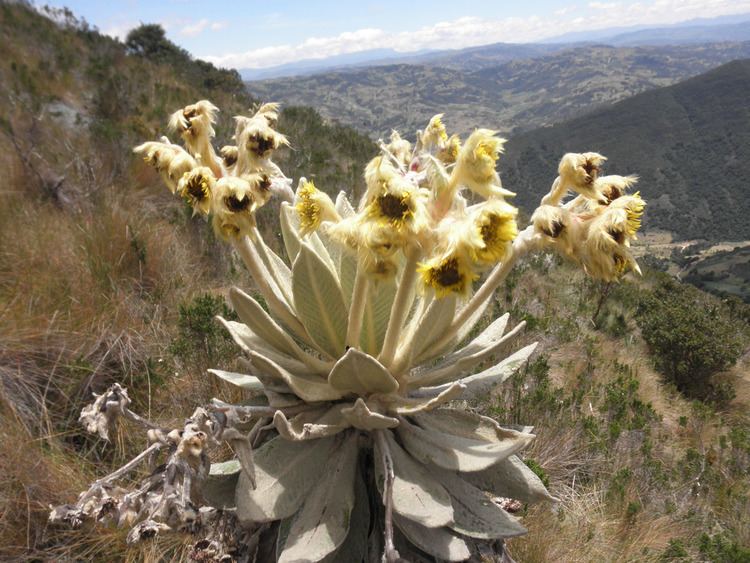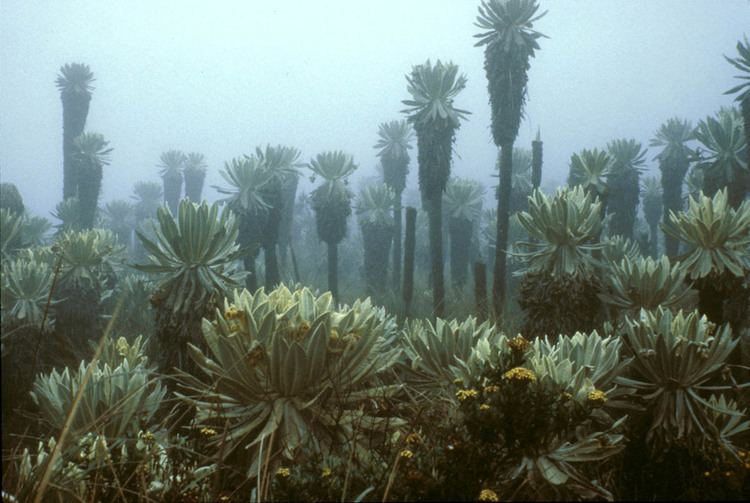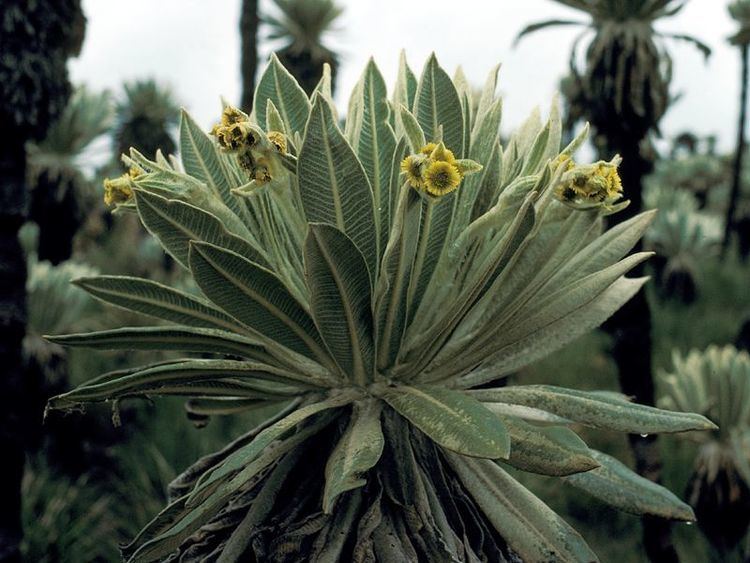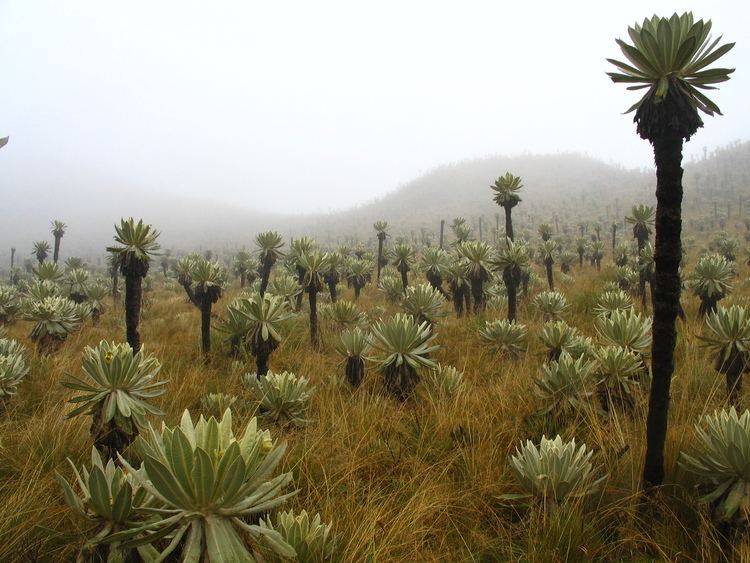Kingdom Plantae Higher classification Millerieae | Scientific name Espeletia Rank Genus | |
 | ||
Similar Daisy family, Espeletia schultzii, Spectacled bear, Polylepis, Espeletiopsis | ||
Espeletia schultzii frailejon plant filmed in the amazon andes in hd
Espeletia, commonly known as frailejón or fraylejón, is a genus of perennial subshrubs, in the sunflower family. The genus, which is native mainly to Colombia, Venezuela and Ecuador, was first formally described in 1808. The genus was named after the viceroy of New Granada, José Manuel de Ezpeleta.
Contents
- Espeletia schultzii frailejon plant filmed in the amazon andes in hd
- Los ultimos frailejones espeletia paipana
- References

The plants live at high altitude in páramo ecosystems. The trunk is thick, with succulent hairy leaves disposed in a dense spiral pattern. Marcescent leaves help protect the plants from cold. The flowers are usually yellow, similar to daisies.

The frailejón plant is endangered due to destruction of the páramo for agricultural purposes, especially potato crops. This activity continues, despite the Colombian government declaring it illegal.

The Espeletia is well known for contributing to the world in water sustainability by capturing water vapor from passing clouds in its spongy trunk and releasing it through the roots into the soil, thus helping to create vast high-altitude subterranean water deposits and lakes that will eventually form rivers.

Los ultimos frailejones espeletia paipana

